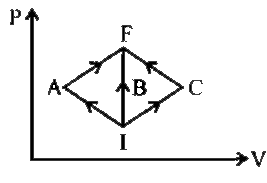State true or false :
(i) In the initial phase of absorbation of elements the ions are absorbed passively.
(ii) Deficiency of manganese leads to inhibition of Ca translocation to shoot apex.
(i) True , (ii) False
Topper's Solved these Questions
- MINERAL NUTRITIONBOOK - AAKASH INSTITUTECHAPTER - MINERAL NUTRITIONEXERCISE - EXERCISE
20 Videos
- MINERAL NUTRITIONBOOK - AAKASH INSTITUTECHAPTER - MINERAL NUTRITIONEXERCISE - ASSIGNMENT (SECTION A)
50 Videos
- MINERAL NUTRITIONBOOK - AAKASH INSTITUTECHAPTER - MINERAL NUTRITIONEXERCISE - ASSIGNMENT (SECTION D)
10 Videos
- MICROBES IN HUMAN WELFAREBOOK - AAKASH INSTITUTECHAPTER - MICROBES IN HUMAN WELFAREEXERCISE - Assignment (SECTION - D Assertion - Reason Type Questions)
10 Videos
- Mock Test 03BOOK - AAKASH INSTITUTECHAPTER - Mock Test 03EXERCISE - EXAMPLE
28 Videos
Similar Questions
State true or false :
(i) Juvenile phase can be known as vegetative phase in all plants.
(ii) Mango is polycarpic plant.
View SolutionAn electron in a hydrogen atom is excited from the ground state to the n = 4 state. Predict which of the following statements are true or false :
(i) n=4 is the first excited state.
(ii) It takes more energy to ionize (remove) the electron from n = 14 than in the ground state.
(iii) The wavelength of light emitted when the electron drops from n=4 to n=2 is longer than that from n=4 to n=1.
(iv) The wavelength which the atom absorbs in going from n=1 to n=4 is the same as emitted when it goes from n=4 to n=1.
(v) The electron is farther from the nucleus (on average) in n = 4 than in the ground state.
View Solution
Knowledge Check
Assertion :- Excess of Mn may induce deficiency of Fe, Mg & Ca.
Reason:- Excess of Mn compete with uptake of Fe & Mg and inhibit translocation of Ca to shoot apex.AIf both assertion and reason are true and reason is the correct explanation of assertion.BIf both assertion and reason are true but reason is not the correct explanation of assertion.CIf assertion is true but reason is false.DIf both assertion and reason are false.Read the following statements regarding the mineral nutrition in plants
(1) For the elements that are actively mobilized within the plants, the deficiency symptoms tend to appear first in the young tissues.
(2) Manganese competes with iron and magnesium for uptake and with magnesium for binding with enzymes.
(3) Manganese inhibits calcium traslocation in shoot apex.
(4) Rhodospirillum is aerobic free-living nitrogen fixing microbe.
Which of these are correctA(i), (iii) & (iv)B(ii) & (iv)C(ii) & (iii)D(ii), (iii) & (iv)Read the following statements regarding the mineral nutrition in plants
(1) For the elements that are actively mobilized within the plants, the deficiency symptoms tend to appear first in the young tissues.
(2) Manganese competes with iron and magnesium for uptake and with magnesium for binding with enzymes.
(3) Manganese inhibits calcium traslocation in shoot apex.
(4) Rhodospirillum is aerobic free-living nitrogen fixing microbe.
Which of these are correctA(i), (iii) & (iv)B(ii) & (iv)C(ii) & (iii)D(ii), (iii) & (iv)
In the P - V diagram, I is the initial state and F is the final state. The gas goes from I to F by
(i) IAF, (ii) IBF and (iii) ICF.

The heat absorbed by the gas is
View SolutionWhich of the following statements are correct?
(i). Reabsorption of water occurs passively in the initial segment of nephron.
(ii). Nitrogenous wastes are absorbed by passive transport.
(iii). Conditional reabsorption of Na+ and water takes palce in DCT.
(iv). DCT reabsorbs HCO−3
(v). DCT is capable of selective secretion of H+,K+ and NH3 to maintain pH and Na+−K+ balance in blood.
(vi). Substance like glucose, amino acids, Na+, etc,. it the filtrate are reabsorbed actively.
View SolutionState true(T) or false (F) and choose the correct option.
phosphorus is absorbed by the plants from the soil in the from of phosphate ions.
cystine and methionine are sulphur containin g amion acids.
iron is an important of ferredoxin.
View SolutionWhich of the following statements is INCORRECT?
I. Human kidneys can produce urine nearly six times more concentrated than the initial filtrate formed.
II. An increase in body fluid volume can switch on the osmoreceptors and stimulate ADH.
III. Substance like glucose, amino acids, Na+ , etc., in the filtrate, are reabsorbed actively by the renal tubule whereas the nitrogenous wastes are absorbed by passive transport
IV. Each kidney has nearly one million complex tubular structures called nephrons which are the functional units.
View SolutionHow many of the following statements describing the functions of Mn are true?
I .Mn is required during non - cyclic photophosphorylation
II. Mn competes with iron and magnesium for uptake .
III.Mn promotes calcium translocation in the shoot apex.
IV. Mn is an activator of many respiratory enzymes.
View Solution